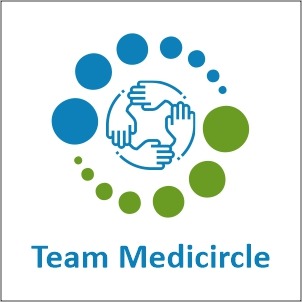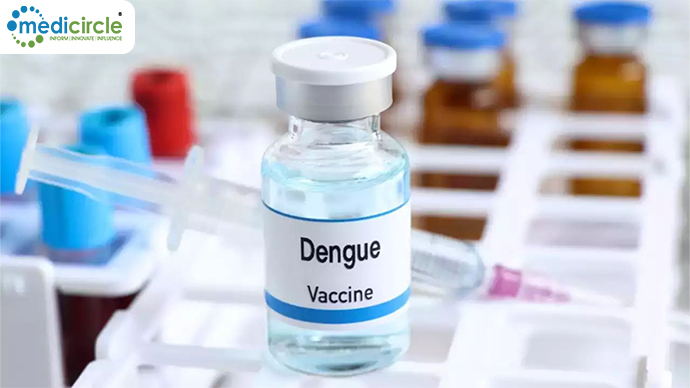An interventional study tracking SARS-CoV-2 testing on admission to a UK hospital finds that the wait for results was just 1.7 hours using point-of-care testing (POCT) close to the patient’s bedside, compared with 21.3 hours using the standard process of PCR testing in a centralised lab within the hospital.
The study is the first to assess real-world impact of POCT and is published in The Lancet Respiratory Medicine journal. It was conducted between 20 March and 29 April 2020 (the peak of the first wave of COVID-19 in the UK).
The findings from 1054 patients in the UK using the QIA-stat-Dx POCT platform suggest that testing suspected COVID-19 at the point-of-care could help health-care providers better manage a surge in cases and reduce infection spread within the hospital.
During the first wave of the coronavirus pandemic, health-care systems across the world relied on PCR testing of patient samples in centralised hospital laboratories, an approach that is lengthy and resource intensive. Delays in results means that it takes longer for patients to be admitted to the correct COVID/non-COVID wards, so they are waiting in mixed assessment rooms, increasing the possibility of transmission between positive and negative patients.
In recent months, a number of molecular POCT testing platforms have been developed, promising rapid results from testing in the area where the patient is being seen, such as A&E. Swab samples are placed into test cartridges that take up little physical space and can be operated by health-care staff, unlike the standard laboratory PCR test where samples are sent off to centralised labs and dealt with by specialist staff. Although there are data to support the speed and accuracy of POCT kits, there remains a lack of insight into their impact on hospital care and transmission.
Reducing diagnosis time is key to tackling COVID-19 as it allows patients to be quickly isolated and for treatment to be started immediately. Furthermore, rapidly identifying cases allows patients to avoid assessment areas, resulting in less need for decontamination of beds and reduced staff exposure.
As hospitals prepare for a second wave of the pandemic, rapid testing of suspected cases of COVID-19 will be key to containment and preventing hospitals from becoming overwhelmed.
“Our findings are the first to suggest the clinical benefits of molecular point-of-care COVID-19 testing in hospitals, demonstrating reduced delays, bed moves, and time in assessment areas, which all lead to better infection control,” says Dr Tristan William Clark, lead author from Southampton General Hospital, UK. “We believe that molecular POCTs should be urgently integrated into care pathways to reduce coronavirus transmission within hospitals to prevent the next wave of the pandemic overwhelming health services around the world.”
The non-randomised trial took place in the Acute Medical Unit and Emergency Department of Southampton General Hospital and included adults with COVID-19 symptoms.
Nose and throat swabs were taken from all patients and tested for infection with SARS-CoV-2 virus. Around half (499/1054) of the patients were tested using POCT in a dedicated hub in the Acute Medical Unit, using a kit known as QIAstat-Dx Respiratory SARS-CoV-2 Panel, which detects SARS-CoV-2 and other respiratory viruses, including influenza. They were also tested using the standard laboratory PCR test. The remaining control patients (555/1054) were tested only using standard PCR testing.
197 (39%) of 500 patients in the POCT group were found to be PCR-positive for SARS-CoV-2 compared with 155 (28%) of 555 in the control group.
The authors compared how long it took to receive results with the two types of testing. Secondary analyses (planned outcome measures that are not as important as the primary outcome measure but are still of interest in evaluating the effect of an intervention) looked at infection control and diagnostic accuracy.
Median time to results with POCT was 1.7 hours compared with 21.3 hours and the difference remained large after taking into account factors such as disease severity, age, and sex.
After testing, patients were transferred to definitive COVID-positive or negative wards. This took 8 hours in the POCT group, compared with 28.8 hours in the control group, with 13.7% transferred directly to the correct ward (bypassing assessment areas) in the POCT group and 0% in the control group. The mean number of bed moves between admission and final ward arrival was lower in the POCT group at 0.9 moves than in the control group at 1.4 moves.
These improvements were seen without compromising diagnostic accuracy. 469 POCT tests were assessed for diagnostic accuracy and had 99.4% sensitivity (176/177 participants) and 98.6% specificity (288/292 participants), outperforming central lab PCR (85.9% [152/177] sensitivity and 98.9% [289/292] specificity).
The findings provide evidence that POCT for SARS-CoV-2 is feasible in the context of appropriate infection control and staff training. The study could inform decision making around patient diagnostics and containment as the pandemic continues.
Most COVID-positive patients were recruited into a further COVID-19 clinical trial that took place during the first wave (63% in the POCT group and 67% in the control group). Patients in the POCT group were enrolled in clinical trials 2 days quicker than those in the PCR group, with a median wait of 1 day versus 3 days.
“Recruiting patients into clinical trials remains an international priority throughout this pandemic and is vital to accelerating the search for effective treatments”, says Dr Clark. “This is especially true when researchers are investigating the potential of anti-virals, which have to be administered at early disease stages to have the greatest benefit.”
The authors caution that there are limitations to the study, most notably that they were unable to randomise the groups due to staffing resources, and there were differences in baseline measures of a number of factors, with the POCT group showing more severe disease. They further caution that POCT must always be carried out under appropriate infection control guidelines and with trained staff, and that the findings may not extend to non-hospital settings.
Writing in a linked Comment, Dr Luke Moore (who was not involved in the study), from Chelsea and Westminster Hospital NHS Foundation Trust, UK, says: “Brendish and colleagues focus on clinical outcomes and find that the QIAstat-Dx SARS-CoV-2 turnaround time leads to shorter time to patient placement in an appropriate care area, fewer bed moves, and faster time to enrolment into other COVID-19 clinical trials—all significant advantages...Although independent, prospective, controlled, in-situ evaluations of respiratory virus diagnostics such as that by Brendish and colleagues are essential, we need to push even further for clear analyses of implementation and impact, to best understand and leverage the value added from point-of-care platforms during this pandemic and beyond.”

 Rapid testing of suspected cases of COVID-19 will be key to containment and preventing hospitals from becoming overwhelmed
Rapid testing of suspected cases of COVID-19 will be key to containment and preventing hospitals from becoming overwhelmed







.png)
.png)
.png)










.jpeg)

.jpeg)










.jpg)




.jpg)

